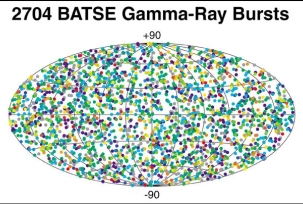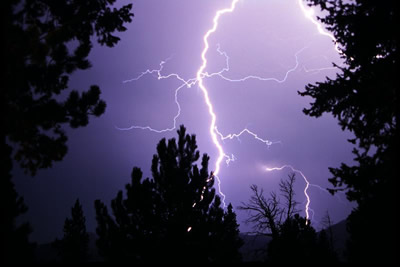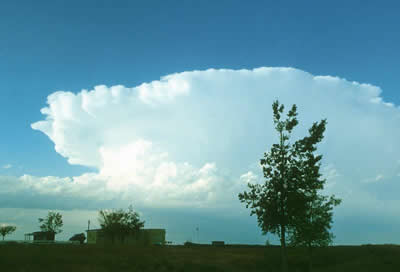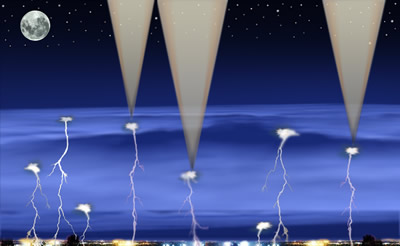Firefly is a new mission to study lightning and gamma rays with CubeSats, small satellites in the shape of a cube.
Click on image for full size
Image Courtesy of NASA/GSFC
Small Satellite Takes on Large Thunderstorms
News story originally written on November 17, 2008
Scientists and students have designed a new satellite called Firefly. This satellite is the size of a loaf of bread and is designed to help solve the mystery of terrestrial gamma-ray flashes (TGFs).
TGFs are short, powerful bursts of gamma rays sent into space from Earth's upper atmosphere. Scientists think the gamma rays are released by electrons which travel at or near the speed of light until they are slowed down by atoms in the upper atmosphere. This process might have connections with some lightning and thunderstorms on Earth.
Scientists know that lightning builds up electric charges at the top of thunder clouds, and this can create a large electric field between the tops of clouds and the outer layer of the atmosphere. But they are trying to learn more about how this process can create TGFs.
Firefly will carry instruments that detect gamma-rays and lightning. Students will be involved in all aspects of the project, including design, development, testing, mission operations, and data analysis.
You might also be interested in:

Satellites in the 1960's looked for a type of light called Gamma Rays. They found bursts of Gamma Rays coming from outer space! They can't hurt you. They are stopped by the Earth's atmosphere. We have
...more
Lightning is the coolest thing about a thunderstorm. In fact, it is how thunderstorms got their name. Wait a minute, what does thunder have to do with lightning? Well, lightning causes thunder. Lightning
...more
Thunderstorms are one of the most exciting and dangerous types of weather. Over 40,000 thunderstorms happen around the world each day. Thunderstorms form when very warm, moist air rises into cold air.
...more
Cumulonimbus clouds belong to the Clouds with Vertical Growth group. They are also known as thunderstorm clouds. A cumulonimbus cloud can grow up to 10km high. At this height, high winds make the top
...more
Scientists have learned that Mount Hood, Oregon's tallest mountain, has erupted in the past due to the mixing of two different types of magma. Adam Kent, a geologist at Oregon State University, says this
...more
The Earth's mantle is a rocky, solid shell that is between the Earth's crust and the outer core. The mantle is made up of many different reservoirs that have different chemical compositions. Scientists
...more
Some faults look strong and like they wouldn’t cause an earthquake. But it turns out that they can slip and slide like weak faults causing earthquakes. Scientists have been looking at one of these faults
...more














